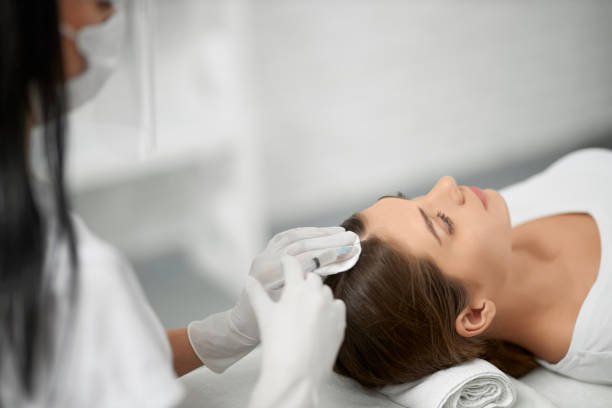Hair loss affects millions of people worldwide, impacting self-confidence and quality of life. While hair transplants are a popular and effective solution, several alternative hair restoration techniques offer viable options for those seeking to address thinning hair or baldness. In this blog, we’ll explore various alternative methods beyond traditional hair transplants, highlighting their benefits, considerations, and suitability for different individuals.
1. Non-Surgical Hair Replacement Systems
Non-surgical hair replacement systems, often referred to as hairpieces or toupees, provide an immediate solution to hair loss without surgery:
- Customizable Options: Hairpieces are custom-made to match your natural hair color, texture, and style preferences.
- Natural Appearance: Modern hairpieces are designed using high-quality materials that mimic natural hair, offering a realistic appearance.
- Ease of Application: Hairpieces can be applied and removed easily, providing flexibility in styling and maintenance.
- Considerations: Regular maintenance and replacement are required to maintain the appearance and comfort of the hairpiece. It’s essential to choose a reputable provider for quality craftsmanship and natural-looking results.
2. Scalp Micropigmentation (SMP)
Scalp micropigmentation involves tattooing tiny dots on the scalp to create the illusion of thicker hair or a shaved head:
- Visual Density: SMP can enhance the appearance of hair density by blending with existing hair or creating a natural-looking hairline.
- Low Maintenance: Requires minimal upkeep compared to hairpieces or surgical procedures.
- Suitability: Ideal for men and women with thinning hair who prefer a cropped or shaved hairstyle.
- Considerations: SMP is a semi-permanent solution that may require touch-ups over time to maintain color vibrancy and consistency.
3. Low-Level Laser Therapy (LLLT)
LLLT uses laser devices to stimulate hair follicles and promote hair growth:
- Non-Invasive: Safe and painless treatment option.
- Stimulates Hair Growth: Helps to increase hair density and thickness by improving blood circulation to the scalp.
- At-Home Devices: Portable LLLT devices are available for home use, offering convenience and ongoing treatment options.
- Considerations: Results vary among individuals, and consistent use over time is necessary to achieve and maintain desired outcomes.
4. Medications and Topical Treatments
Several medications and topical treatments are available to slow down hair loss and promote hair regrowth:
- Finasteride (Propecia): Oral medication that inhibits the hormone responsible for hair loss (DHT).
- Minoxidil (Rogaine): Topical solution applied to the scalp to stimulate hair follicles and promote hair growth.
- Considerations: These treatments require ongoing use to maintain results, and effectiveness may vary among individuals. Consultation with a healthcare provider is necessary to determine suitability and potential side effects.
5. Platelet-Rich Plasma (PRP) Therapy
PRP therapy involves injecting concentrated platelets from your blood into the scalp to stimulate hair follicle growth:
- Natural Hair Growth: Uses the body’s own growth factors to promote thicker hair and improve hair density.
- Non-Surgical: Minimally invasive procedure with minimal downtime.
- Considerations: Multiple sessions may be required for optimal results, and individual response to treatment varies.
Choosing the Right Option
Selecting the most suitable hair restoration technique depends on factors such as the extent of hair loss, personal preferences, lifestyle, and budget. It’s essential to consult with a qualified hair restoration specialist to assess your candidacy, discuss treatment goals, and receive personalized recommendations. Whether opting for non-surgical solutions like hairpieces and SMP or exploring medical treatments and therapies, informed decision-making ensures you achieve natural-looking results and restore your confidence effectively.
Conclusion
Alternative hair restoration techniques provide diverse options for individuals experiencing hair loss, offering solutions ranging from non-surgical approaches like hairpieces and SMP to medical treatments such as LLLT, medications, and PRP therapy. By exploring these alternatives and consulting with experts in the field, you can find a personalized solution that meets your needs, restores hair density, and enhances your overall well-being. Whether seeking immediate results or long-term hair growth stimulation, these techniques offer viable paths towards regaining a fuller head of hair and renewed self-confidence.

